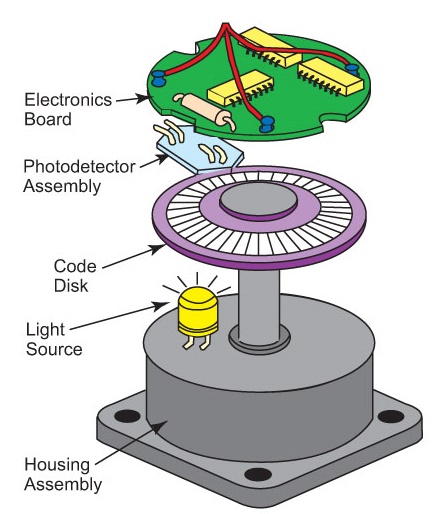How does an encoder work?
Encoders may produce either incremental or absolute signals
RAD Electric Int. | Sales representative of Capacitors, Fuses, Encoders, Diodes, Thyristors, Resistors
Articles
Encoders use different types of technologies to create a signal, including: mechanical, magnetic, resistive and optical – optical being the most common. In optical sensing, the encoder provides feedback based on the interruption of light.
The graphic at right outlines the basic construction of an incremental rotary encoder using optical technology. A beam of light emitted from an LED passes through the Code Disk, which is patterned with opaque lines (much like the spokes on a bike wheel). As the encoder shaft rotates, the light beam from the LED is interrupted by the opaque lines on the Code Disk before being picked up by the Photodetector Assembly. This produces a pulse signal: light = on; no light = off. The signal is sent to the counter or controller, which will then send the signal to produce the desired function.

What's the difference between Absolute and Incremental encoders?
Encoders may produce either incremental or absolute signals. Incremental Baumer signals do not indicate specific position, only that the position has changed. Absolute Baumer encoders, on the other hand, use a different “word” for each position, meaning that an absolute encoder provides both the indication that the position has changed and an indication of the absolute position of the encoder.
Baumer is a one of the best company to produce absolute and incremental encoders. Rad electric as a supplier is ready to meet the needs all of industries who wants encoders.